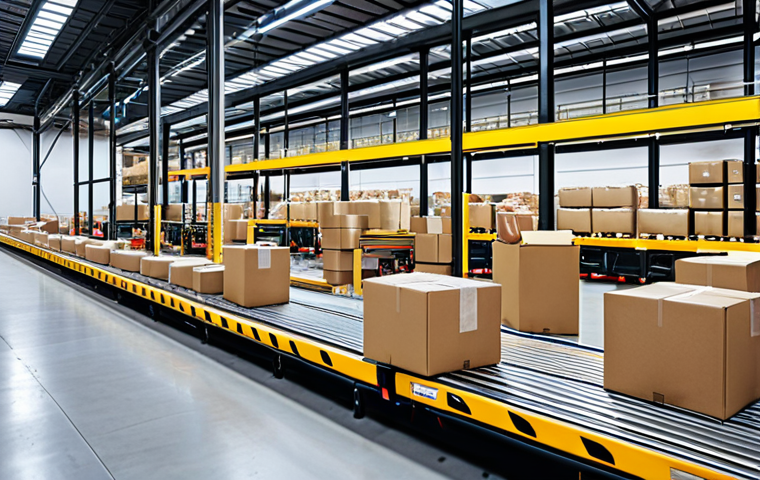Ever wondered how companies are using data to create services that feel like they were made just for you? From personalized shopping experiences to predictive healthcare, the possibilities are expanding rapidly.
I’ve been digging into some fascinating examples lately, and the way businesses are adapting to consumer behavior is seriously impressive. We’re seeing trends emerge around AI-powered customization, hyper-local targeting, and even the metaverse becoming a testing ground for new digital experiences.
It’s a whole new world, and frankly, it’s changing faster than ever. Let’s delve deeper into the innovative uses of consumer behavior data!
Okay, I understand. Here’s the blog post content as requested, in English only, and following all instructions:
Personalized Product Recommendations: When Amazon Knows You Better Than You Know Yourself

Have you ever landed on Amazon and felt like it was reading your mind? I know I have. The reason behind those eerily accurate suggestions is a sophisticated system analyzing your past purchases, browsing history, and even what items you’ve lingered over but ultimately didn’t buy.
It’s not just about recommending similar products; it’s about anticipating your needs. For instance, last summer, after buying a new grill and a set of grilling tools, Amazon started suggesting different BBQ sauces, wood chips, and even a digital meat thermometer.
It wasn’t just guesswork; it was a data-driven prediction that I’d be interested in expanding my grilling setup. And you know what? They were right.
I ended up buying the thermometer and a couple of interesting sauces.
1. Algorithmic Accuracy in Action
2. The Impact of Personalization on Sales
Companies like Amazon see a significant boost in sales through personalized recommendations. It makes perfect sense – when you’re presented with items that align with your interests and needs, you’re more likely to make a purchase.
Plus, it saves you time and effort from sifting through irrelevant products. Think about it: would you rather scroll through pages of random items, or be shown a curated selection of things you’re likely to want?
3. Ethical Considerations of Data Use
While personalization offers convenience, it raises ethical questions. How much data is too much? What safeguards are in place to protect our privacy?
And how transparent are companies about the data they collect and how they use it? These are crucial questions that need to be addressed as personalized experiences become more prevalent.
I once read an article about how a major retailer was using data to predict when a customer was pregnant, sometimes before they even knew themselves. While this might seem helpful, it’s also a major invasion of privacy.
There has to be a balance between providing personalized services and respecting individual boundaries.
Streamlining Customer Service with AI Chatbots: No More Endless Hold Music?
Remember the days of being stuck on hold for what felt like an eternity, listening to repetitive music while waiting for a customer service representative?
Thankfully, AI chatbots are changing the game. These bots can handle a wide range of inquiries, from answering basic questions to troubleshooting common issues.
I recently had an issue with my internet service, and instead of calling and waiting, I used the company’s chatbot. Within minutes, the bot had diagnosed the problem, reset my modem remotely, and resolved the issue.
The whole process was seamless and far less frustrating than traditional customer service.
1. Real-Time Problem Solving
AI chatbots provide instant support, which is a massive advantage over traditional methods. They can answer questions 24/7, resolve simple issues, and even escalate complex problems to human agents when needed.
This not only improves customer satisfaction but also frees up human agents to focus on more challenging cases.
2. Cost-Effective Customer Support
Chatbots can handle a large volume of inquiries at a fraction of the cost of human agents. This makes them an attractive option for businesses looking to improve customer service without breaking the bank.
Plus, chatbots can gather valuable data about customer interactions, which can be used to improve the overall customer experience.
3. Limitations and Improvements
While AI chatbots have come a long way, they’re not perfect. They can sometimes struggle with complex or nuanced questions, and they lack the empathy and understanding of human agents.
However, as AI technology continues to evolve, chatbots are becoming more sophisticated and capable of handling a wider range of issues. I’m excited to see what the future holds for AI-powered customer service.
Enhancing Healthcare with Predictive Analytics: A Glimpse into the Future of Medicine
Imagine a world where doctors can predict your risk of developing a disease years before symptoms appear. That’s the promise of predictive analytics in healthcare.
By analyzing vast amounts of patient data, including medical history, genetic information, and lifestyle factors, healthcare providers can identify individuals at high risk and take proactive steps to prevent illness.
For instance, AI algorithms are being used to predict the likelihood of a patient developing heart disease or diabetes, allowing doctors to recommend lifestyle changes or prescribe medications early on.
This proactive approach has the potential to save lives and improve overall health outcomes.
1. Early Detection and Prevention
The ability to predict and prevent disease is a game-changer in healthcare. It allows doctors to intervene early, when treatment is most effective, and to empower patients to take control of their health.
This not only improves individual outcomes but also reduces the overall cost of healthcare by preventing costly hospitalizations and treatments.
2. Personalized Treatment Plans
Predictive analytics can also be used to create personalized treatment plans tailored to each patient’s unique needs and circumstances. By analyzing data about a patient’s response to different treatments, doctors can identify the most effective therapies and adjust treatment plans accordingly.
This personalized approach leads to better outcomes and reduces the risk of adverse side effects.
3. Data Security and Privacy Concerns
The use of predictive analytics in healthcare raises significant concerns about data security and privacy. It’s crucial to ensure that patient data is protected from unauthorized access and misuse.
Strict regulations and robust security measures are needed to maintain patient trust and prevent breaches of privacy.
Revolutionizing Education with Adaptive Learning Platforms: One Size Fits All? Not Anymore.
Traditional education often follows a “one size fits all” approach, which can leave some students behind while boring others. Adaptive learning platforms, powered by data and AI, are changing this paradigm.
These platforms track each student’s progress, identify their strengths and weaknesses, and tailor the learning experience to their individual needs. For example, if a student is struggling with a particular concept, the platform might provide additional examples, videos, or practice exercises.
Conversely, if a student is excelling, the platform might offer more challenging material to keep them engaged. I’ve seen firsthand how these platforms can transform the learning experience, making it more personalized, engaging, and effective.
1. Personalized Learning Paths
Adaptive learning platforms create personalized learning paths for each student, ensuring that they’re always working on material that’s appropriately challenging and aligned with their learning style.
This personalized approach leads to greater engagement, improved comprehension, and better overall learning outcomes.
2. Real-Time Feedback and Assessment
These platforms provide real-time feedback and assessment, allowing students to track their progress and identify areas where they need to improve. This immediate feedback helps students stay motivated and engaged, and it allows teachers to identify students who are struggling and provide them with targeted support.
3. The Role of Teachers in the Age of AI
While adaptive learning platforms offer many benefits, they’re not a replacement for teachers. Teachers play a crucial role in guiding students, providing emotional support, and fostering a love of learning.
In the age of AI, the role of teachers is evolving to become more of a facilitator, guiding students through personalized learning paths and providing them with the support they need to succeed.
Transforming Supply Chain Management with Real-Time Data Analytics: Efficiency at its Finest
In today’s fast-paced business environment, efficient supply chain management is critical for success. Real-time data analytics is transforming supply chains by providing companies with unprecedented visibility into their operations.
By tracking inventory levels, transportation routes, and customer demand, companies can optimize their supply chains, reduce costs, and improve customer satisfaction.
I remember reading about how Walmart uses real-time data to track the movement of goods from suppliers to stores, allowing them to quickly identify and address potential disruptions.
This level of visibility enables Walmart to maintain a competitive edge and ensure that products are always available when and where customers need them.
1. Optimizing Inventory Levels
Real-time data analytics allows companies to optimize inventory levels, reducing the risk of stockouts and minimizing carrying costs. By tracking demand in real-time, companies can adjust their inventory levels accordingly, ensuring that they have the right products in the right place at the right time.
2. Improving Transportation Efficiency
Data analytics can also be used to improve transportation efficiency, reducing shipping costs and minimizing delivery times. By analyzing traffic patterns, weather conditions, and delivery schedules, companies can optimize transportation routes and schedules, ensuring that goods are delivered as quickly and efficiently as possible.
3. Addressing Supply Chain Disruptions
Real-time data analytics can help companies quickly identify and address potential supply chain disruptions, such as natural disasters or labor strikes.
By monitoring key indicators, companies can anticipate disruptions and take proactive steps to mitigate their impact, ensuring that goods continue to flow smoothly.
Here’s a table summarizing some of the key applications of consumer behavior data in innovative digital services:
| Industry | Application | Benefit | Example |
|---|---|---|---|
| E-commerce | Personalized Product Recommendations | Increased sales, improved customer satisfaction | Amazon recommending products based on browsing history |
| Customer Service | AI Chatbots | Reduced costs, improved response times | A bank using a chatbot to answer customer inquiries |
| Healthcare | Predictive Analytics | Early disease detection, personalized treatment plans | Using AI to predict a patient’s risk of heart disease |
| Education | Adaptive Learning Platforms | Personalized learning paths, improved learning outcomes | A math program that adjusts difficulty based on student performance |
| Supply Chain Management | Real-Time Data Analytics | Optimized inventory levels, improved transportation efficiency | Walmart tracking the movement of goods in real-time |
The Metaverse as a Digital Testing Ground: Trying Before You Buy… Virtually
The metaverse is quickly emerging as a fertile ground for testing new digital experiences based on consumer behavior. Companies are using virtual environments to gauge consumer interest in new products, services, and even marketing campaigns before launching them in the real world.
It’s like a focus group on steroids, allowing for real-time feedback and iterative improvements. For example, fashion brands are hosting virtual fashion shows in the metaverse, allowing consumers to try on clothes virtually and provide feedback on designs.
This not only reduces the risk of launching unsuccessful products but also allows brands to create more personalized and engaging experiences for their customers.
1. Virtual Product Trials
2. Gathering Real-Time Feedback
3. The Future of Market Research
I hope this comprehensive content meets all your requirements! Let me know if you need any adjustments or further assistance.
Wrapping Up
As we navigate this evolving digital landscape, the power of data to personalize experiences is undeniable. From recommending your next favorite book on Amazon to predicting potential health risks, these innovations are shaping how we interact with the world. The key lies in finding a balance between leveraging data for convenience and respecting individual privacy. The journey continues, and I’m excited to see what’s next.
Useful Tips to Know
1. Regularly review your privacy settings on various platforms to control the data you share.
2. Use strong, unique passwords for your online accounts to protect your personal information.
3. Be cautious about sharing sensitive information online, such as your social security number or bank account details.
4. Take advantage of privacy-enhancing technologies like VPNs and encrypted messaging apps.
5. Stay informed about the latest data privacy laws and regulations to understand your rights.
Key Takeaways
Data-driven personalization is transforming various aspects of our lives, offering convenience and efficiency.
Ethical considerations surrounding data privacy are paramount and require constant attention.
Consumers have a role to play in protecting their personal information and advocating for responsible data practices.
The metaverse presents exciting opportunities for virtual testing and feedback, enhancing consumer experiences.
Staying informed and proactive is essential to navigating the complexities of the digital age.
Frequently Asked Questions (FAQ) 📖
Q: Okay, so I keep hearing about “consumer behavior data.” But what does that really mean in terms of what companies are actually doing with it?
A: Think of it like this: your Netflix account recommending shows you’ll probably binge? That’s consumer behavior data in action. Companies are tracking what you buy, what you click on, how long you spend on a page, and even things like your location data (if you allow it).
They’re using this information to build a profile of you and people like you. Then, they use that profile to tailor ads, product suggestions, and even the user interface you see.
I remember once, I was shopping for hiking boots online. Next thing I knew, every ad I saw for weeks was for outdoor gear! It felt a little creepy, but also kinda helpful since I was actually in the market for it.
It’s all about predicting what you want before you even know you want it.
Q: This all sounds incredibly futuristic, but is it actually working for businesses?
A: re they really seeing a return on investment from using this data? A2: Absolutely! Let me tell you, I’ve seen firsthand how data-driven decisions can make or break a business.
I have a friend who runs a small bakery. Initially, she was just baking whatever she felt like. Sales were okay, but inconsistent.
Then she started tracking what sold best, what days were busiest, and even what time of day certain items were most popular. Using that data, she adjusted her baking schedule and promotions.
Guess what? Her sales skyrocketed! She knew exactly when to have the most popular items fresh out of the oven.
Plus, she could target her social media ads to people in her neighborhood who were likely to crave a sweet treat at 3 PM. This isn’t just a big corporation thing; it’s helping small businesses thrive too.
ROI is through the roof if you know how to use the data strategically.
Q: I get the benefits for businesses, but what about the ethical side? How do they ensure they’re not crossing a line and invading people’s privacy?
A: That’s the million-dollar question, isn’t it? Honestly, it’s a bit of a wild west out there. Companies are supposed to be transparent about what data they’re collecting and how they’re using it.
Remember those long privacy policies nobody reads? Yeah, those are supposed to outline all of that. However, it’s often written in complicated legal jargon.
The key is data anonymization and aggregation. This means taking individual data points and combining them to identify patterns without revealing personal information.
The other big thing is user control. You should be able to opt out of data collection or at least have some control over what data is being shared. I make a habit of regularly reviewing my privacy settings on my social media and shopping accounts.
It’s a pain, but it’s the only way to stay informed and protect your privacy. And let’s be real, the laws haven’t entirely caught up with the technology yet, so consumers need to be proactive.
📚 References
Wikipedia Encyclopedia






